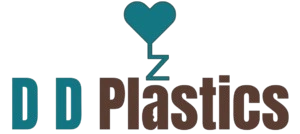Understanding the Role of Tubes in Manufacturing
Manufacturing projects often require precise and reliable components to ensure quality output. Tubes are among these essential elements, used across various industries for their versatility and durability. They serve critical functions such as transporting fluids, protecting wires, or supporting structures. Understanding how these tubes enhance manufacturing processes is vital for selecting the right material and design for specific applications.
Versatile Uses in Production Lines
acrylic tubing is a popular choice in many production lines due to its lightweight nature and ease of fabrication. Its transparency allows for easy visual inspection of the contents within, which is beneficial in quality control processes. Furthermore, acrylic has excellent weather resistance, making it suitable for both indoor and outdoor applications where exposure to environmental factors is a concern.
Enhanced Safety Features
Another advantage of using acrylic tubing is its non-toxic nature, which is crucial in industries like food processing and pharmaceuticals. It ensures that there are no harmful contaminants mixed with products during transportation or storage. Additionally, acrylic tubes can withstand significant pressure without breaking, reducing the risk of leaks and accidents on the manufacturing floor.
Cost-Effective Solutions
Acrylic tubing is not only durable but also cost-effective. The material’s longevity means less frequent replacements, saving time and money on maintenance. Unlike some metals, acrylic does not corrode, ensuring a longer lifespan and consistent performance over time. This makes it an economical choice for many businesses looking to optimize their production processes.
Customization Options Available
The ability to customize tubes greatly enhances their utility in manufacturing settings. These tubes can be modified in terms of size, shape, and color to meet specific project requirements. Customization allows manufacturers to adapt quickly to changes in production demands without compromising efficiency or quality.
- Different lengths and diameters available for varied uses
- Custom colors for brand consistency or safety coding
- Specialized shapes for unique fitting needs
Environmental Considerations
Using alternatives to traditional materials can have a positive impact on the environment. Acrylic tubing is recyclable, which contributes to sustainability goals by reducing waste. Many companies prioritize this aspect as part of their corporate responsibility initiatives. By choosing sustainable options, businesses can contribute to environmental conservation while maintaining high operational standards.
Troubleshooting Common Issues
While acrylic tubing offers numerous benefits, it is important to be aware of potential issues. Scratches or clouding can occur if the tubes are not handled properly. Regular maintenance and cleaning are recommended to preserve clarity and functionality. Utilizing proper cutting techniques will prevent edge chipping, ensuring smooth connections during assembly.
- Inspect regularly for signs of wear or damage
- Use gentle cleaners to maintain surface clarity
- Employ correct tools when modifying tube length
Final Recommendations for Manufacturers
For manufacturers aiming to optimize their production processes, exploring different tube options is essential. It’s clear that understanding each material’s benefits can significantly impact project outcomes. To learn more about how D&D Plastics can support your business, call us at (801) 373-0202. Located in Orem, UT, our team looks forward to helping you achieve your manufacturing goals efficiently.
